Isis has released a video showing militants using power tools and bulldozers to deface and destroy ancient monuments in the Assyrian city of Nimrud in northern Iraq, before the site is levelled with explosives.
Damage to the site was first reported in March, but the undated video lays bare the full scale of destruction, as the city is completely demolished.
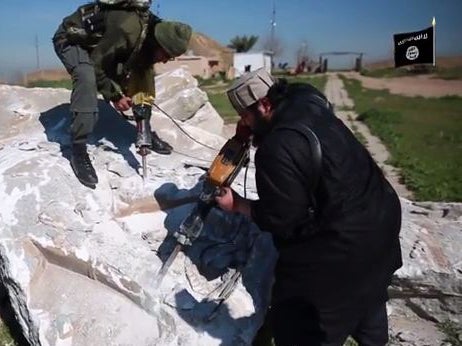
Isis has previously attacked a number of other Assyrian sites in Iraq and destroyed countless manuscripts, books and other artefacts as they are deemed un-Islamic and blasphemous.
The video depicts men using angle grinders, pneumatic drills and sledgehammers to break priceless stone friezes, some of which have been in situ for more than 3,000 years.
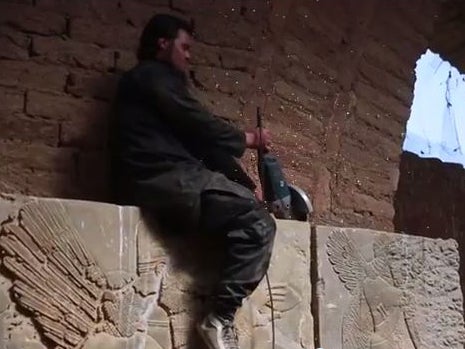
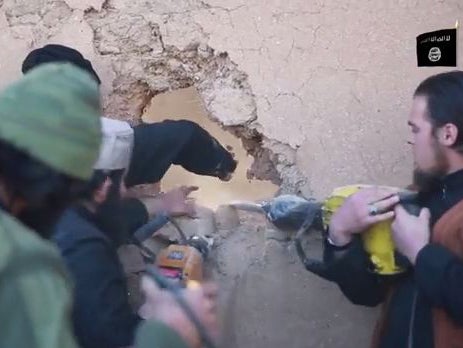
As the stone blocks crash to the ground the attackers can be heard shouting “Allahu Akbar”.
Following the defacing of the intricately carved stonework, the site is rigged with explosives and a mushroom cloud of dust can be seen as the city is blown up.
Irinia Bokova, the director general of the UN’s cultural body, Unesco, has previous condemned the destruction of key historical sites by Isis and said that the “deliberate destruction of cultural heritage constitutes a war crime”.
The latest demolition by Isis comes after reports that the terrorist group burnt Mosul library to ground, which contained 8,000 early manuscripts.
Nimrud, which was a major Assyrian city from about 1250BC to 610BC, is located 20 miles south of the modern city of Mosul and is considered one of most important archaeological sites in Iraq.
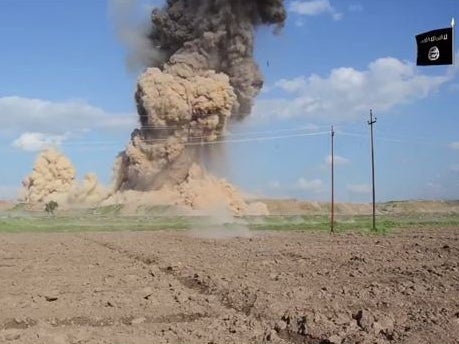
Excavations began in the city in 1845 and have continued, with interruptions, until the 1990s. The site also suffered looting and destruction during the invasion of Iraq in 2003.
A number of treasures from the site were transported to foreign museums across the world, primarily in the nineteenth and early twentieth centuries. But many irreplaceable artefacts, including the large winged lamussu statues with human heads, remain in the city.
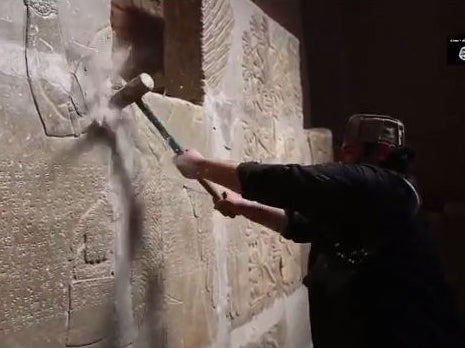
Join our commenting forum
Join thought-provoking conversations, follow other Independent readers and see their replies
Comments